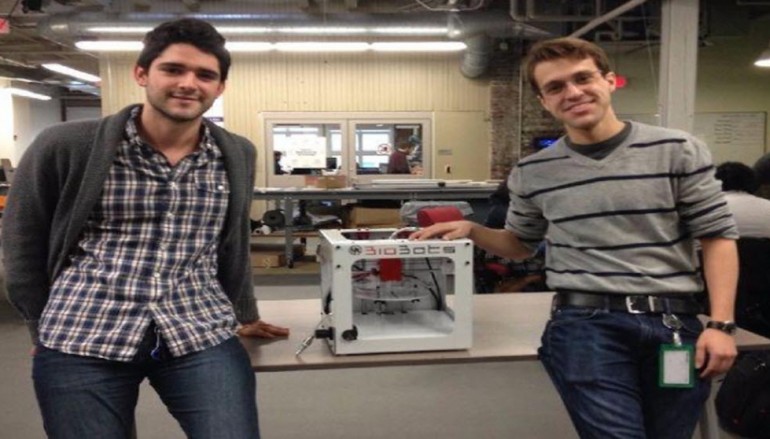
Hacking the human: the startups 3D printing living cells, editing genes and growing meat in laboratories
‘Hacking‘ is an important part of technological progress: tinkering, breaking things apart, fiddling around with them and putting them back together in pursuit of a solution to a problem.
Traditionally this has usually meant devices or software. But a new breed of startups have turned to another test subject: us.
“Biology – DNA – is technology. It is coding. It is physical coding, but still code,” Ryan Bethencourt, founder of ‘biotech’ accelerator IndieBio, tells Techworld during an interview at Pioneers Festival.
Lab-grown pork meatballs
San Francisco-based IndieBio funds 30 biotech startups every year, mainly “scientists who want to be entrepreneurs”, Bethencourt says. Alumni include Memphis Meats, which made the first lab-grown ‘pork meatball’, and Clara Foods, which has successfully grown ‘egg whites’ in the lab.
Another startup called BioBots, which was set up in 2014, sells a 3D printer – but with a difference. Rather than plastic or other materials, it prints cells and thus builds living tissue.
BioBots was born out of a melting pot of ideas within Pennysylvania State University. Cofounder Danny Cabrera studied biology while the other founder Ricky Solorzano (both pictured) studied engineering, and they mingled with computer scientists, biologists and software experts.
It’s a classic dorm room startup story. The cofounders got started over the summer at the end of university in their rented accommodation, which was above a bar near the university.
“We were printing shit in our dorm room, constantly looking out of the window checking the landlady wouldn’t shut us down… we were just engineers messing around really,” says Cabrera.
Printing lungs
Although it was “tough to get people convinced”, the pair won $5,000 in a university competition to develop a prototype, then $50,000 through the Dreamit Health accelerator in Philadelphia, then raised $1.5 million in a seed funding round.
They now have a team of nine – mainly roboticists, tissue engineers, material scientists and software engineers – with their first sales person set to join soon.
“At the moment your printer at home has different colour cartridges. Our dream is to have that but for skin, lung and liver tissues,” says Cabrera.
The printers sell for $10,000 while the cell ‘ink’ costs around $700. But who on earth needs to print living cells? In fact, there are far more applications than you might imagine. Cabrera believes the market could be in the hundreds of millions of dollars – potentially even billions.
BioBots is already working with ‘a few pharma companies’, Cabrera says, to explore toxicity testing for new drugs. Currently, these are tested on tissues harvested from corpses which sell for as much as $100,000, he says.
“At the moment pharma companies are stuck waiting for people to die. That is very expensive, and kind of shitty all round. Bioprinting could be a perfect alternative,” Cabrara explains.
The technology could be used to improve the ‘personalisation’ of medicine – by testing it on one individual’s cells directly to check drug compatability. It could also be used for cosmetic testing.
However, while it is a long-term goal, we’re a long way off these printers being used to build transplant organs.
“It’s going to take a long time. We’re many years away from a fully functioning liver. At the moment what we can build is just a few milimetres thick,” he says.
Moore’s Law for biology
Part of the reason behind this new ‘biohacking’ trend is the radical drop in the cost of biotech. Be it 3D printers or sequencing the genome, the cost of software and hardware required to get started has dropped from many thousands of dollars to hundreds, or even less. “It’s Moore’s Law for biology,” says Bethencourt.
Bethencourt and Cabrera’s breezy acceptance of these new techologies can be slightly startling, at least to a UK journalist.
Cambridge-educated Bethencourt admits the UK audience can see selling science as “distasteful”, with the general view being that “the right place is in the laboratory”.
However, he views that as the UK’s loss.
“The UK has world-class science but commercialisation is sub-par. In fact it is kind of appalling how bad universities and investors are at supporting commercialisation. Investors in the UK are predatory. They don’t just take their pound of flesh, they take the whole arm,” Bethencourt says.
And anyway, he is of the view that while the West gets bogged down in squeamishness and ethics, “China doesn’t give a shit. They’ve been tinkering with embryos for a long time.”
Gene editing
Bethencourt even goes as far as to say pre-birth gene editing, where embryos with certain traits are discarded in favour of those with more desirable characteristics (see Gattaca), “will happen, and I am sure it has already”.
Alhough he says it must be regulated, he believes gene editing will “one day be accepted, especially for genetic diseases”. He points to liver transplants, which were initially considered to be ‘Frankenstein-esque’ but are now routine.
“It’s like anything, from fire onwards. Most animals run from fire, but an ancestor must have picked it up and pondered how to use it. We’ve seen that initial reaction of fear ever since. But tech wins over time.”
Source | TechWorld





